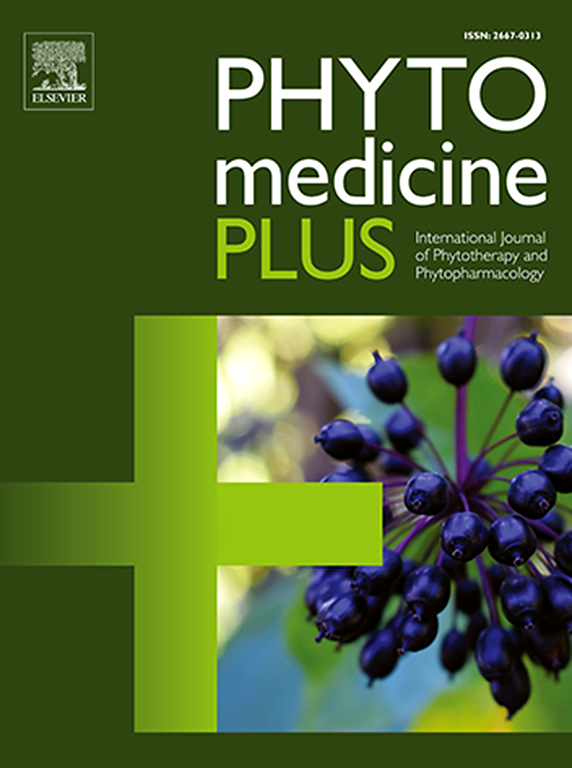红红草苷通过抑制VDAC1激活AKT/GSK-3β,减轻a β1 - 42诱导的人神经母细胞瘤细胞铁下垂
Q3 Pharmacology, Toxicology and Pharmaceutics
引用次数: 0
摘要
背景:阿尔茨海默病(AD)是一种退行性神经系统疾病,SH-SY5Y细胞在AD的发病机制中起重要作用。红景天苷是红景天的主要活性成分。目的探讨红景天苷对Aβ1-42诱导SH-SY5Y细胞铁下垂的作用。方法采用sa β1 - 42诱导的SH-SY5Y细胞构建AD细胞模型,采用CCK-8检测细胞活力。western blotting检测凋亡相关蛋白、VDAC1、AKT/GSK-3β信号通路相关蛋白的表达;用铁含量测定试剂盒测定细胞中Fe 2 +的含量;免疫荧光法检测细胞内ROS水平;流式细胞术检测细胞凋亡。结果红柳苷在最佳浓度为30 mM时可减轻a β1 - 42诱导的SH-SY5Y细胞铁凋亡,使GPX4和FTH1表达升高,IREB2表达降低。细胞凋亡率下降,细胞内Fe 2 +含量和ROS水平也下降。转染si-VDAC1后,其变化趋势与红景天苷处理后相似。此外,AKT抑制剂和AKT激活剂表明AKT/GSK-3β信号通路参与a - β1 - 42诱导SH-SY5Y细胞铁下垂。结论红皮苷通过抑制VDAC1激活AKT/GSK-3β通路,减轻细胞铁下垂。本文章由计算机程序翻译,如有差异,请以英文原文为准。
Salidroside alleviates Aβ1–42-induced ferroptosis in human neuroblastoma cells by AKT/GSK-3β activation via inhibiting VDAC1
Background
Alzheimer's disease (AD) is a degenerative neurological disease, and SH-SY5Y cells play an important role in the pathogenesis of AD. Salidroside is the main active ingredient of Rhodiola rosea L.
Purpose
The aim of this study was to investigate the effect of salidroside on the induction of ferroptosis in SH-SY5Y cells by Aβ1–42.
Methods
Aβ1–42-induced SH-SY5Y cells were used to construct an AD cell model, and cell viability was measured by CCK-8. The expression of ferroptosis-related proteins, VDAC1, and AKT/GSK-3β signaling pathway-related proteins was detected by western blotting; the Fe²⁺ content of cells was determined by an iron content assay kit; the level of ROS in cells was detected by immunofluorescence; and apoptosis was detected by flow cytometry.
Results
This research showed that salidroside alleviated Aβ1–42-induced ferroptosis in SH-SY5Y cells at an optimal concentration of 30 mM. The expression of GPX4 and FTH1 increased, and the expression of IREB2 decreased after salidroside treatment. The apoptosis rate decreased, as did the intracellular Fe²⁺ content and the level of ROS. After transfection with si-VDAC1, the trend of change was similar to that after salidroside treatment. Furthermore, treatment with an AKT inhibitor and AKT activator demonstrated the involvement of the AKT/GSK-3β signaling pathway in the induction of ferroptosis in SH-SY5Y cells by Aβ1–42.
Conclusion
The findings suggest that salidroside alleviates cellular ferroptosis by AKT/GSK-3β pathway activation via inhibiting VDAC1.
求助全文
通过发布文献求助,成功后即可免费获取论文全文。
去求助
来源期刊

Phytomedicine Plus
Medicine-Complementary and Alternative Medicine
CiteScore
3.70
自引率
0.00%
发文量
178
审稿时长
81 days
期刊介绍:
 求助内容:
求助内容: 应助结果提醒方式:
应助结果提醒方式:


